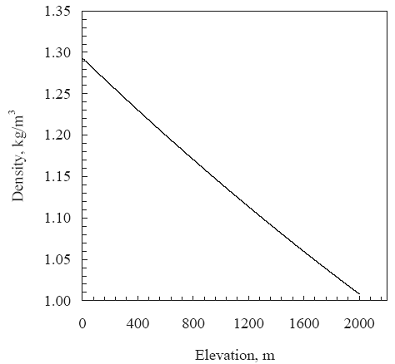Related Resources: power transmission
Wind Turbine Power From Wind
Power Transmission and Technology Menu
Applications and Design
Wind Turbine Power From Wind
Energy available in wind is basically the kinetic energy of large masses of air moving over the earth’s surface. Blades of the wind turbine receive this kinetic energy, which is then transformed to mechanical or electrical forms, depending on our end use. The efficiency of converting wind to other useful energy forms greatly depends on the efficiency with which the rotor interacts with the wind stream. With this, let us discuss the fundamental principles involved in this wind energy conversion process.
The kinetic energy of a stream of air with mass m and moving with a velocity V is given by
Eq. 1
E = (1/2) m V2
Consider a wind rotor of cross sectional area A exposed to this wind stream as shown in Fig. 1. The kinetic energy of the air stream available for the turbine can be expressed as
Eq. 2
E = (1/2) ρa v V2

Figure 1 Wind Turbine
where ρa a is the density of air and v is the volume of air parcel available to the rotor. The air parcel interacting with the rotor per unit time has a cross-sectional area equal to that of the rotor (AT) and thickness equal to the wind velocity (V). Hence energy per unit time, that is power, can be expressed as
Eq. 3
P = (1/2) ρa AT V2
From Eq. (3), we can see that the factors influencing the power available in the wind stream are the air density, area of the wind rotor and the wind velocity. Effect of the wind velocity is more prominent owing to its cubic relationship with the power.
Factors like temperature, atmospheric pressure, elevation and air constituents affect the density of air. Dry air can be considered as an ideal gas. According to the ideal gas law,
Eq. 4
p VG = n R T
where p is the pressure, VG is the volume of the gas, n is the number of kilo moles of the gas, R is the universal gas constant and T is the temperature. Density of air, which is the ratio of the mass of 1 kilo mole of air to its volume, is given by
Eq. 5
ρa = m / VG
From Eqs. (4) and (5), density is given by
Eq. 6
ρa = m p / ( R T )
If we know the elevation Z and temperature T at a site, then the air density can be calculated by
Eq. 7
ρa = 353.049 / T e-0.0034 ( Z / T )


Fig. 2. Effect of elevation and temperature on air density
The density of air decreases with the increase in site elevation and temperature as illustrated in Fig. 2. The air density may be taken as 1.225 for most of the practical cases. Due to this relatively low density, wind is rather a diffused source of energy. Hence large sized systems are often required for substantial power production.
The most prominent factor deciding the power available in the wind spectra is its velocity. When the wind velocity is doubled, the available power increases by 8 times. In other words, for the same power, rotor area can be reduced by a factor of 8, if the system is placed at a site with double the wind velocity. The advantages are obvious. Hence, selecting the right site play a major role in the success of a wind power projects.
Related:
- Wind Power Generation and Wind Power Turbine Design
- Aerodynamics of Wind Turbine
- Wind Energy Fundamentals
- Wind Energy, Renewable Energy and the Environmment
- Hydraulic Turbine Power Formulae and Calculator
Source:
Sathyajith Mathew
Wind Energy
Fundamentals, Resource Analysis and Economics